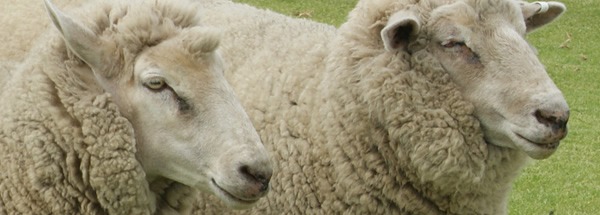Far before tourism and services became an important industry in Geelong; and even well before manufacturing came to the town, wool was king. While many of the other Victorian cities like Ballarat and Bendigo were built on gold, Geelong was built on the golden fleece. Wool gave Geelong its identity, its wealth and has built this great city with a proud lasting legacy that will stay with the town forever.

Back in the founding days of Geelong when it was still part of the Colony, the town’s major trade was in wool. Geelong’s proximity to the prime farmlands of the western district and a good port helped establish Geelong’s first major industry.
In the early 1900’s just about all of Geelong’s entire waterfront was devoted to the wool trade; huge wool stores lined the foreshore and Brougham Streets, waiting for vessels to arrive at either Cunningham or Yarra Street Piers. Today, with new fabrics and synthetic materials the world is not as reliant on wool.
Today, the huge woolen mills around the city have gone; Cunningham Pier no longer ships cargo and the wool stores have moved to Lara and beyond. Still, many of the red brick wool stores remain and have been transformed into modern uses. Deakin University’s Waterfront Campus and the gigantic Westfield Shopping complex are all housed in parts of our woolen heritage. The pride of Geelong’s old wool stores is one beautiful bluestone building dating back to 1872. Gracing the corner of Brougham and Moorabool Streets, this building brings to life the days that the city of Geelong was once run off the sheep’s back.
The National Wool Museum is an amazing journey that traces the first European settlers to our country right up to the current times. It is an incredible display depicting all facets of the Australian wool industry and its importance to our culture, economy and national identity.
Opening in the bicentennial year of 1988, by Her Majesty Queen Elizabeth II; the centre features two huge galleries and a large exhibition space where traveling exhibitions and shows are held.
Gallery Hall One is titled “The Wool Harvest”; here visitors can experience life on the farm, how sheep are raised and wool is harvested. There are many historical accounts of the hardships, successes and challenges facing farmers over our 200 plus years of agriculture in Australia. Visitors can learn how sheep are shorn, how wool is classified and pressed before being sent to the market. They can learn what it is like working as a shearer or a farm hand and sometimes can even see a sheep be shorn.
Gallery Hall Two is titled “From Fleece to Fabric” and is dedicated to the final product, the wool. Visitors can see interactive displays of how the textile industry has changed from the early days to the high tech science it is today. See working knitters, looms and other machinery used in fabric production. There are several displays where visitors can read and see firsthand accounts of what it was like working in the many Geelong woolen mills, including some very interesting wartime stories, when wool was such an important fabric to protect our service men and women.

The National Wool Museum is open every day excluding major holidays, and is designed as a self-guided tour, with plenty of volunteers to help along the way. Remember to bring some extra pocket money as the gift shop has plenty of woolly friends to take home.

